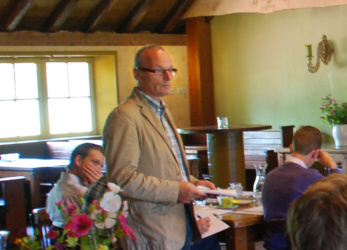Global dairy markets split: Europe slumps as Oceania booms. Trade wars ignite. Smart farmers chase fat percentages to survive 2025 chaos.
EXECUTIVE SUMMARY: Global dairy markets face stark regional divides, with European futures declining (-0.8% butter, -1.2% whey) despite physical prices holding 31.9% above 2024 levels, while Oceania milk production grows (+1.2% NZ). Escalating U.S.-China trade tensions threaten exports as cheese emerges as a bright spot (+19% EU prices). Farmers must prioritize component efficiency (4.33% Belgian milkfat), diversify trade routes, and leverage futures markets to navigate volatility. With EU production declining (-5% Belgium) and component-driven profits rising, strategic agility separates survivors from casualties.
KEY TAKEAWAYS:
- Regional Rift Deepens: Europe’s bearish futures (-0.8% butter) clash with Asia’s bullish SGX trades (+1.0% SMP).
- Component Efficiency Pays: Belgian milk’s 4.33% fat content offsets volume losses, proving quality trumps quantity.
- Trade Wars Reshape Flows: U.S. cheese exports hit records (+7.3%) despite China’s 34% retaliatory tariffs.
- Cheese Dominates Margins: EU cheese prices (+19% YoY) outshine sliding butter, signaling processor priorities.
- Oceania Quietly Wins: NZ milk collections (+1.2%) and efficient culling (+9.1%) showcase sustainable growth models.

This week, the global dairy landscape presents a stark contrast, with European futures markets trending downward while physical markets remain substantially above year-ago levels. Oceania continues showing production growth in stark contrast to European declines, creating regional supply imbalances that smart producers are turning into profit opportunities. Meanwhile, Trump’s sweeping tariffs have triggered retaliatory measures from key dairy-importing nations, threatening established trade flows as U.S. exports already showed weakness.
FUTURES MARKETS REVEAL BATTLE BETWEEN EUROPEAN BEARS AND ASIAN BULLS
European traders hit the panic button last week, with EEX futures declining across all significant categories despite robust year-over-year gains. Butter futures led the slide, dropping 0.8% to €7,201 for the April-November strip, with open interest reduced by 28 lots to 2,831 lots. This reduction suggests traders are cutting their exposure amid increasing uncertainty.
SMP wasn’t spared either, sliding 0.5% to €2,494 despite a substantial increase in open interest by 724 lots to 5,512 lots. Whey futures performed worst, tumbling 1.2% to €904, reflecting challenges in the protein ingredient sector.
Meanwhile, Singapore’s SGX painted a dramatically different picture with mostly positive price movements:
| Product | Price Change | New Average Price |
| WMP | +0.6% | $3,797 |
| SMP | +1.0% | $2,837 |
| AMF | Up | $6,666 |
| Butter | +0.4% | $6,871 |
This stark divergence between European and Asian futures suggests regional factors drive trader sentiment, with European concerns about economic headwinds constraining dairy demand while Asian markets remain comparatively optimistic.
EU PHYSICAL MARKETS: SHORT-TERM BLUES, LONG-TERM GREEN
Don’t let this week’s dips fool you. The EU’s dairy quotation system revealed short-term pressure despite substantial year-over-year strength. The butter index dropped 0.7% to €7,568, with Dutch butter taking the biggest hit at 1.3% (€100) to €7,400. German butter slipped 0.7% to €7,475, while French butter remained steady at €7,830.
The annual comparison is genuinely eye-popping – the butter index stands at a staggering 31.9% (€1,831) above last year’s levels. This massive annual appreciation has been a boon for European dairy producers, who’ve maintained production despite rising costs and regulatory pressures.
SMP followed a similar pattern, with the index losing 0.7% to €2,422 yet remaining 3.7% (€87) above year-ago levels. Whey prices also weakened to €875 but stand an impressive 36.3% (€233) above 12 months ago. Only WMP provided a weekly bright spot, with the index gaining 0.8% to €4,435, driven by a substantial 2.5% rise in French WMP.
CHEESE INDICES: THE REAL MONEY MAKERS
European cheese indices all posted modest weekly declines but maintained impressive annual gains that suggest fundamental strength in the category:
| Cheese Type | Weekly Change | New Price | YoY Gain |
| Cheddar Curd | -0.7% | €4,795 | +18.2% |
| Mild Cheddar | -0.4% | €4,810 | +19.1% |
| Young Gouda | -0.9% | €4,380 | +13.1% |
| Mozzarella | -1.3% | €4,284 | +19.2% |
Despite short-term fluctuations, these substantial year-over-year gains across all cheese categories point to strong structural support for cheese values. This aligns with the EU dairy forecast for 2025, which projects increased cheese production even as milk production declines – a clear sign that processors prioritize this high-value segment.
GDT AUCTION: POWDER POWER PLAY
The latest Global Dairy Trade auction (TE377) saw the overall index climb 1.1% to $4,250. SMP emerged as the star performer with a robust 5.9% gain to $2,876, while WMP edged down just 0.1% to $4,062.
The divergence between European and Oceanic powder values was highlighted by Solarec’s Belgian Regular WMP selling at $4,665 compared to Fonterra’s $3,980. Butter experienced the most significant decline among major products, falling 3.9% to $7,895, while AMF bucked the fat trend by rising 2.4% to $6,695. With 17,643 tonnes sold to 163 bidders, the auction demonstrated healthy participation despite market uncertainty.
PRODUCTION PATTERNS: OCEANIA SURGES WHILE EUROPE CONTRACTS
The most striking feature of this week’s data is the dramatic regional divergence in milk production. Fonterra reported New Zealand milk collections were up 1.2% year-over-year to 133.7 million kgMS, driven primarily by South Island’s impressive 2.9% growth. Fonterra Australia collections also grew by 1.6% to 8.2 million kgMS.
This Oceanic growth presents a stark contrast to European struggles:
| Country | Feb 2025 Production | YoY Change |
| Spain | 579kt | -1.2% |
| Italy | 1.06 million tonnes | -1.0% |
| Belgium | 340kt | -5.0% |
Belgian producers face the most dramatic challenges, with February collections plummeting 5.0% and cumulative production down 4.2% for 2025. This aligns with broader projections for EU dairy in 2025, which forecast a 0.2% overall decline in milk production due to shrinking cow herds, environmental regulations, and disease pressures.
COMPONENT EFFICIENCY: THE NEW BATTLEGROUND
Looking beyond raw volumes, component data reveals significant variations in milk quality that impact processor returns. Belgian milk posted the highest component levels with 4.33% milkfat and 3.53% protein, followed by Italian milk at 4.05% and 3.49% protein. Spanish milk recorded relatively lower components at 3.88% milkfat and 3.40% protein.
This variation explains why Spanish milk solids collections grew slightly (+0.2%) despite volume declines, while Italian milk solids remained flat and Belgian milk solids fell less dramatically (-3.3%) than their volume drop. The growing gap between volume and component trends underscores the industry’s increasing focus on nutritional density rather than raw output.
NZ DAIRY COW CULLING: FEWER, BETTER COWS
In a seemingly counterintuitive trend, New Zealand dairy cow slaughters increased 9.1% year-over-year to 76,649 head in February despite the growth in milk production. This suggests Kiwi producers achieve greater efficiency with fewer animals, likely through improved genetics and management practices.
The 12-month rolling dairy cow slaughter total was 771 thousand head, still 4.9% below the same period last year. This indicates a longer-term moderation in culling rates after more aggressive herd reductions in prior years.
TRADE WAR FALLOUT: DAIRY IN THE CROSSHAIRS
This week, the elephant in the room is the dramatic expansion of global trade tensions following Trump’s “Liberation Day” tariff announcements. Speaking from the Rose Garden, Trump implemented sweeping tariffs on more than 180 countries and territories, using the trade deficit in each relationship as the basis for tariff calculations.
While Canada and Mexico were spared, many key markets for U.S. dairy products were hit. China swiftly announced retaliatory 34% tariffs on U.S. products, mirroring the percentage in the administration’s list. This comes on top of existing tariffs from earlier conflicts.
The timing couldn’t be worse for U.S. dairy exports, which already showed weakness. After adjusting for leap day, February exports fell 4.3% year-over-year, with particularly sharp declines in nonfat dry milk shipments, which hit their lowest February volume since 2016. Southeast Asian demand for milk powder has been notably weak.
The news wasn’t bad – U.S. cheese exports rose 7.3% to 99 million pounds, the largest February volume ever recorded. Butter exports also soared 134.2%, while anhydrous milkfat shipments increased nearly tenfold compared to February 2024.
5 SURVIVAL STRATEGIES FOR DAIRY FARMERS
The current global dairy environment presents both significant challenges and strategic opportunities:
- Component Over Volume – The growing divergence between volume and milk solids trends underscores the importance of breeding and management decisions that maximize component efficiency rather than raw output.
- Regional Strategies Must Differ – European producers face regulatory and cost constraints that necessitate a more significant focus on value-added processing. In contrast, Oceania producers may have more opportunity for volume growth.
- Cheese Holds Particular Promise – With cheese indices showing the most substantial year-over-year gains, processors will likely continue shifting milk toward this category, especially in Europe, where cheese production is forecast to increase.
- Trade War Demands Contingency Planning – Producers and processors heavily dependent on export markets must develop alternatives for potential disruption of established trade flows. Asian markets beyond China may present growing opportunities as trade patterns shift.
- Price Volatility Requires Sophisticated Risk Management – The divergence between European and Asian futures markets highlights the value of a diversified approach to hedging across multiple exchanges.
THE BOTTOM LINE: THINK GLOBAL, ACT LOCAL
The global dairy market continues sending contradictory signals that challenge straightforward interpretation. Short-term European weakness contrasts with robust year-over-year gains. Production trends show dramatic regional divergence, with Oceania growing while Europe contracts. Meanwhile, the escalating trade war adds significant uncertainty to market projections.
Smart dairy producers will look beyond immediate price signals to understand the structural factors driving longer-term trends. Focusing on efficiency improvements, component optimization, and strategic product mix decisions will prove more valuable than reactive responses to weekly market fluctuations.
This market isn’t for the faint-hearted. European producers are walking a tightrope between component premiums and volume cliffs. U.S. exporters are caught in a geopolitical meat grinder. Oceania? They’re just quietly printing money while the Northern Hemisphere fights.
The playbook’s clear: Think global, act local, and never stop chasing components. Because in this market, fat percentage isn’t just a number – it’s your lifeline.
Learn more:
- Butterfat Booms as Cheese Falters: Surviving 2025’s Dairy Chaos
Explore how butterfat-focused operations are thriving amid shifting market dynamics, powder gluts, and herd consolidation. Learn survival strategies for 2025. - EU Dairy Forecast 2025: Milk Production Declines as Cheese Demand Rises
Dive into the EU’s strategic pivot toward cheese production as milk volumes shrink, environmental pressures mount, and smaller farms exit the industry. - Global Dairy Market Trends 2025: European Decline, US Expansion Reshaping Industry Landscape
Discover how regional shifts in production—EU contraction vs. U.S. expansion—are reshaping global dairy markets and creating opportunities for forward-thinking farmers.
 Join the Revolution!
Join the Revolution!
Join over 30,000 successful dairy professionals who rely on Bullvine Daily for their competitive edge. Delivered directly to your inbox each week, our exclusive industry insights help you make smarter decisions while saving precious hours every week. Never miss critical updates on milk production trends, breakthrough technologies, and profit-boosting strategies that top producers are already implementing. Subscribe now to transform your dairy operation’s efficiency and profitability—your future success is just one click away.







 Join the Revolution!
Join the Revolution!
 Every dairy family builds their agricultural legacy over time. For Bram Prins it started in the Netherlands over forty years ago. “In 1968 our family decided to move to county Groningen. As the oldest of seven children I worked with my father to start farming 54 ha of arable land where we had 100 cows. “
Every dairy family builds their agricultural legacy over time. For Bram Prins it started in the Netherlands over forty years ago. “In 1968 our family decided to move to county Groningen. As the oldest of seven children I worked with my father to start farming 54 ha of arable land where we had 100 cows. “ 





